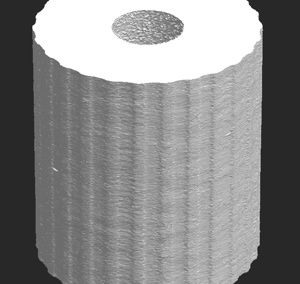The overall response to our Eight Brake Myths Busted article was huge. A few techs took umbrage, but at least there was discussion. Too often, technicians get stuck in a mindset that leads to false diagnoses. The point of the article was to shake things up in your diagnostic thinking. 
A large number of complaints were in response to the section on brake hose restrictions. In this myth, I made the statement that many brake hose restrictions were misdiagnosed. Some readers felt compelled to write in explaining their own experiences.
The number one reason a lot of readers brought it up was corrosion’s role in causing restrictions. Many cited brackets and collars that corrode to the point that they reduce the diameter of the hose. One reader in the Rust Belt even said that it is far too common an occurrence. He said the crimps on some fittings on aftermarket hose assemblies are starting to corrode due to the thin coating of plating on the lines.
Another cause of restrictions brought up by readers was damage by clamps and pliers. Some technicians clamp lines and force the fluid out of the bleeder when the piston is pushed back, while others do not like to put any clamps on the hose, except for diagnostic purposes.
It is a fact that the most contaminated brake fluid is at the wheels, and removing the contaminated fluid through the bleeder screw is a good idea. But, where did this practice start? Looking at OE service information, we could not find this procedure outlined in any current service procedure.
Maybe OEMs do not want to pay the warranty time or they do not see cars in the state independent shops do. But, we suspect that they are afraid of damage to the lines. Looking back, this practice went mainstream when ABS systems were starting to find their way onto cars in the late 1980s.
Could technicians be doing more harm than good by clamping lines? The jury is still out. But, chances are if the boot and seals on the caliper have perished to the point where debris is large enough to block or get jammed in a valve, the caliper should be replaced. This goes back to the myth about rotor discard dimensions.
Brake Hose Construction
With all of the discussion about hoses, we did some more research to find out if things are changing with hoses.
FMVSS 106 addresses brake line standards for the U.S. Department of Transportation, but it does not address corrosion.
Most hydraulic brake hoses have four layers of synthetic rubber and fabric. FMVSS tests resistance to collapsing, chemicals and other extreme conditions.
The DOT standard, in a nutshell, says brake hoses must be flexible in a wide range of temperatures while having a predictable expansion rate so the pedal feel and ABS response is the same in winter and summer. It also specifies that hoses must be able to bend and twist at certain angles without collapsing or kinking.
One engineer, speaking off the record, said that most restriction and failures of hoses occur at the ends of the hose where it connects to the caliper banjo bolt or hard line. He said this is where layers can break free and cause restrictions. Also, he noted the worst thing for a hose is if it accidentally supports the weight of the caliper.
When should a brake hose be replaced? Any time there is a sign of cracking or deformation like bubbles or indentations. Don’t take any chances.
What is in the future for brake hoses? With efficiency of the engine becoming more important, the efficiency of the hydraulic brake system is coming into question.
Engineers see the vacuum brake booster as a controlled vacuum leak that throws off the stoichiometric ratio that has been tamed with direct fuel injection and advanced engine controls. Without a booster, the transfer of force from the pedal to the caliper has to become more efficient. This could mean even stiffer and maybe smaller diameter brake hoses in the future.













